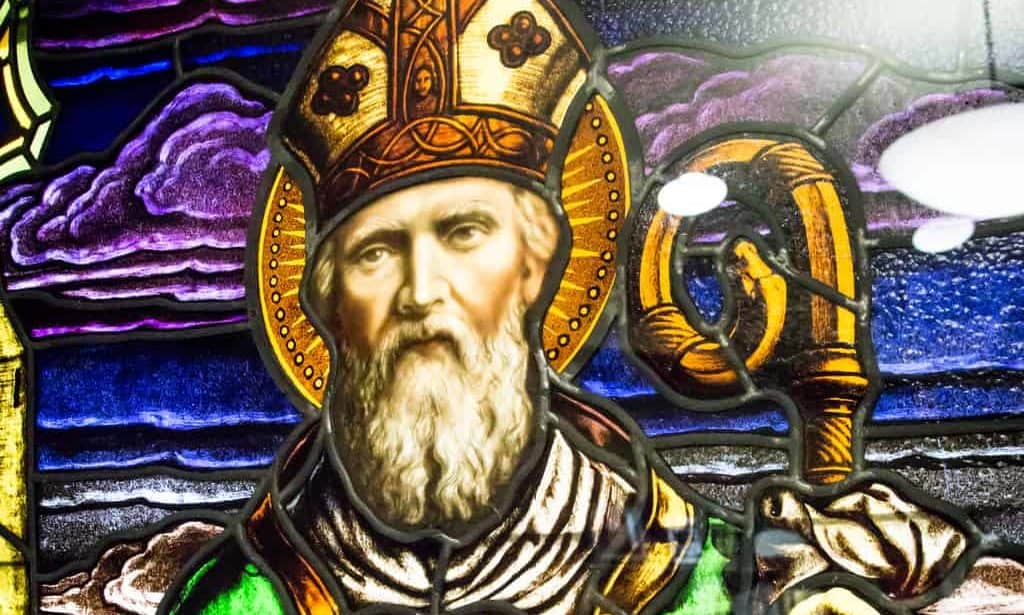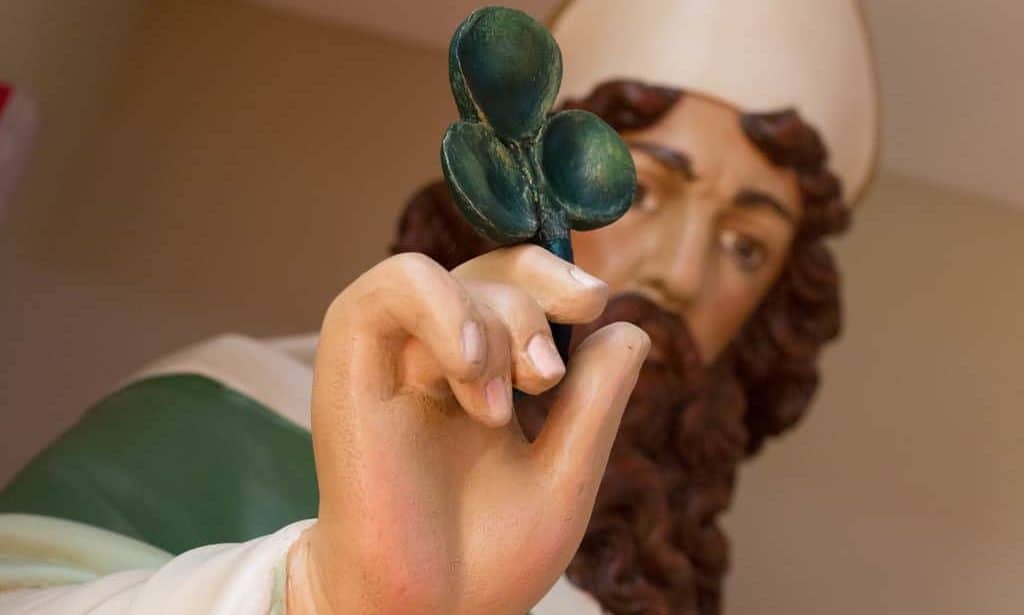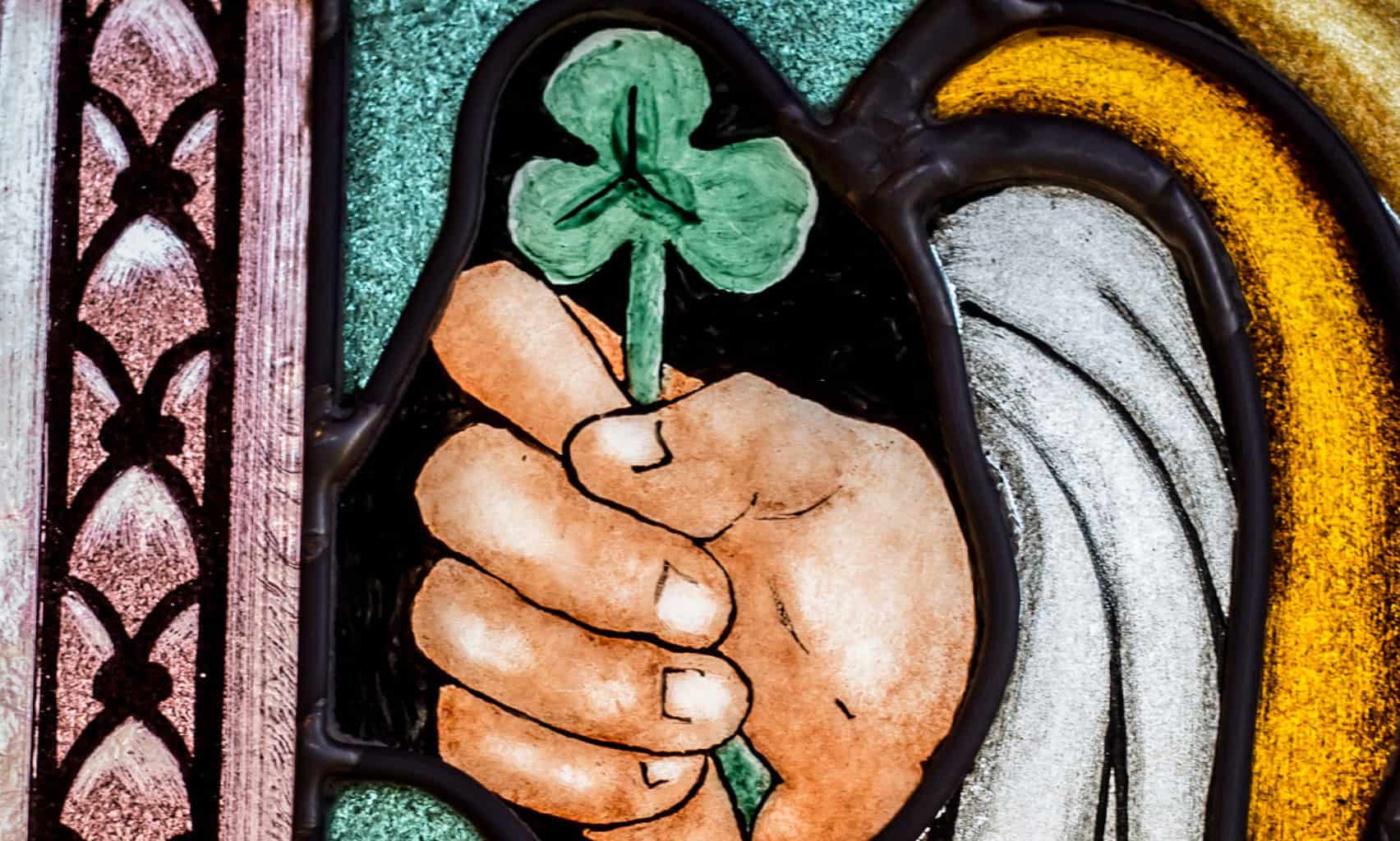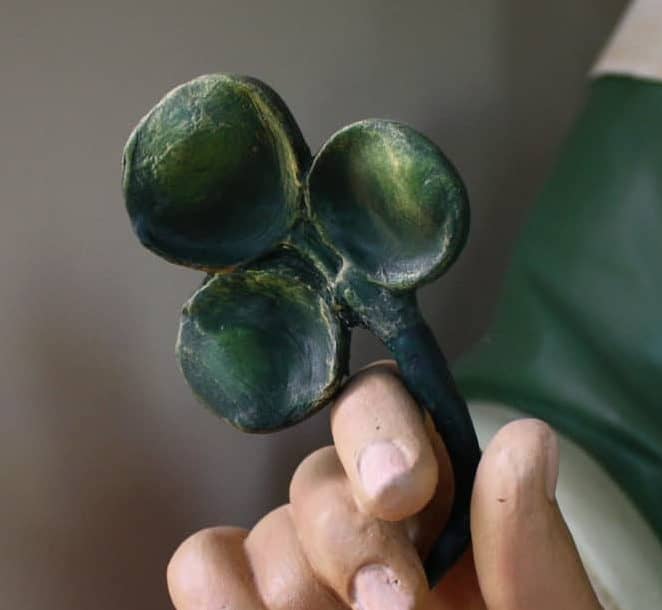Pray for us, Saint Patrick,
that our holiness may be known by the fruit of our works.



EARLY LIFE
Patrick may have been born in Dunbarton, Scotland, Cumberland, England, or in northern Wales. He called himself both a Roman and a Briton.
At 16, he and a large number of his father’s slaves and vassals were captured by Irish raiders and sold as slaves in Ireland. Forced to work as a shepherd, he suffered greatly from hunger and cold.
After six years Patrick escaped, probably to France, and later returned to Britain at the age of 22. His captivity had meant spiritual conversion. He may have studied at Lerins, off the French coast; he spent years at Auxerre, France, and was consecrated bishop at the age of 43. His great desire was to proclaim the good news to the Irish.
CALL TO IRELAND
In a dream vision it seemed “all the children of Ireland from their mothers’ wombs were stretching out their hands” to him. He understood the vision to be a call to do mission work in pagan Ireland. Despite opposition from those who felt his education had been defective, he was sent to carry out the task. He went to the west and north–where the faith had never been preached–obtained the protection of local kings, and made numerous converts.
Because of the island’s pagan background, Patrick was emphatic in encouraging widows to remain chaste and young women to consecrate their virginity to Christ. He ordained many priests, divided the country into dioceses, held Church councils, founded several monasteries and continually urged his people to greater holiness in Christ.
Saint of the Day is used with permission from Franciscan Media
LEGACY
He suffered much opposition from pagan druids and was criticized in both England and Ireland for the way he conducted his mission. In a relatively short time, the island had experienced deeply the Christian spirit, and was prepared to send out missionaries whose efforts were greatly responsible for Christianizing Europe.
Patrick was a man of action, with little inclination toward learning. He had a rock-like belief in his vocation, in the cause he had espoused. One of the few certainly authentic writings is his Confessio, above all an act of homage to God for having called Patrick, unworthy sinner, to the apostolate.
There is hope rather than irony in the fact that his burial place is said to be in County Down in Northern Ireland, long the scene of strife and violence.
Learn more about Saint Patrick
Legend has it that Saint Patrick stood on an Irish hillside and delivered a sermon that drove the island’s serpents into the sea. While it’s true that the Emerald Isle is snake-free, chances are that’s been the case throughout human history. Water has surrounded Ireland since the end of the last glacial period, preventing snakes from slithering over; before that, it was blanketed in ice and too chilly for the cold-blooded creatures. Scholars believe the snake story is an allegory for Saint Patrick’s eradication of pagan ideology.
It is said that Saint Patrick used the three leaved shamrock to explain the concept of the Holy Trinity to the pagan people of Ireland.

